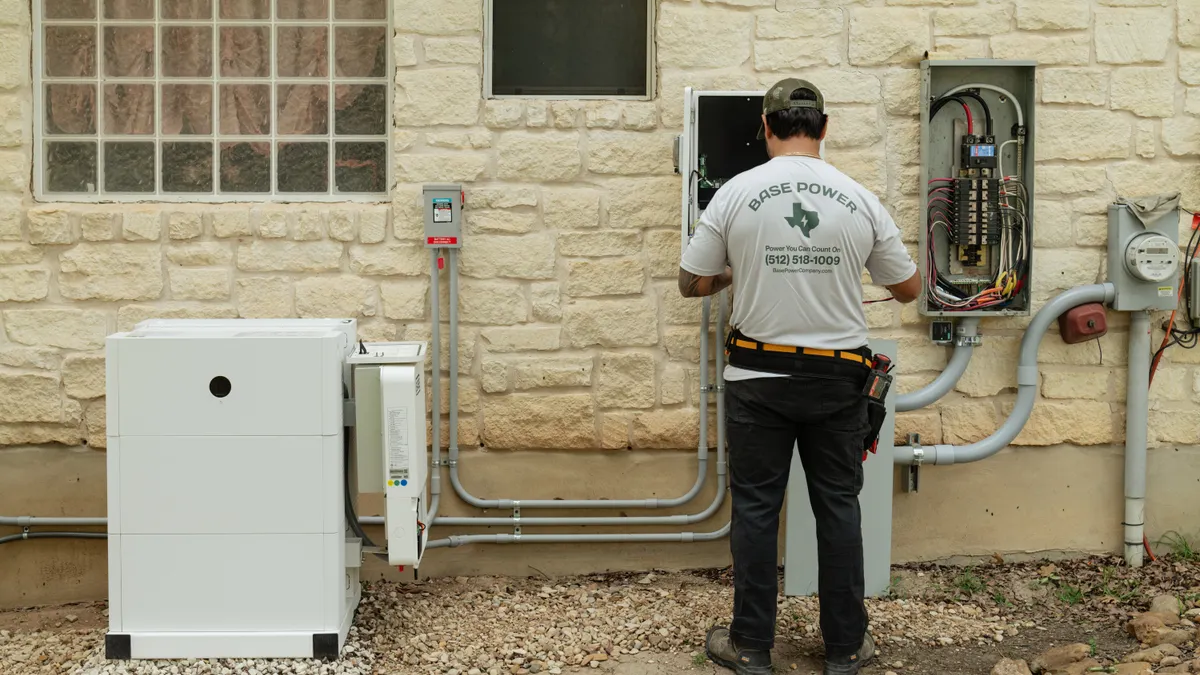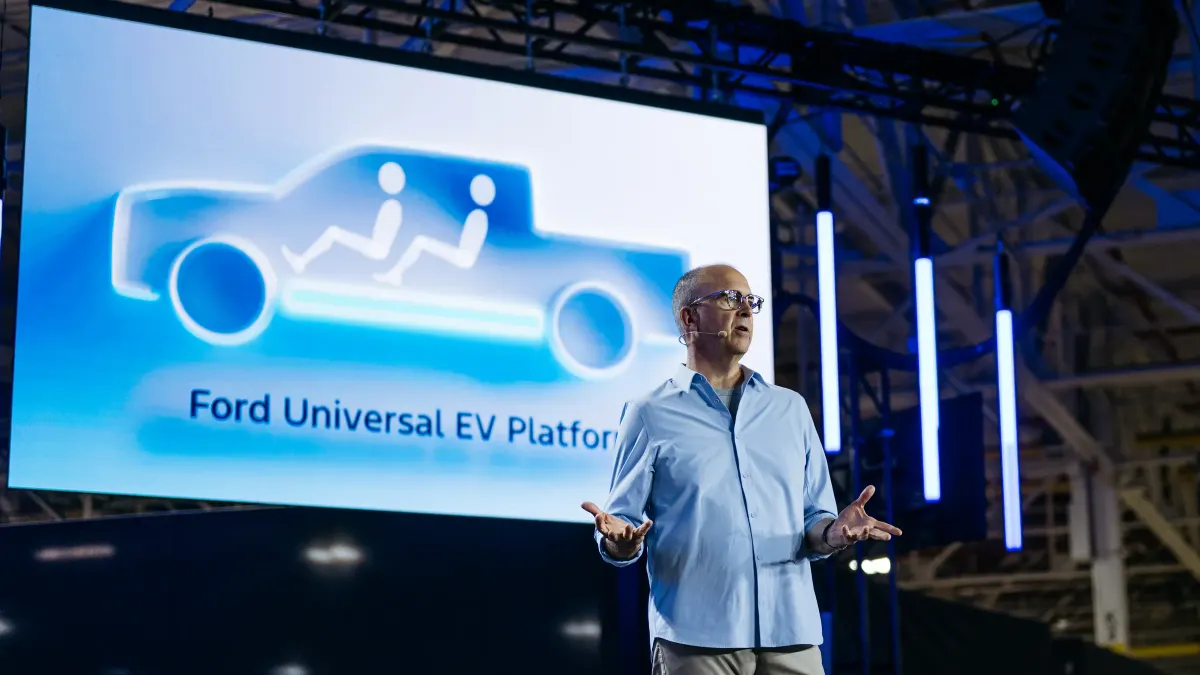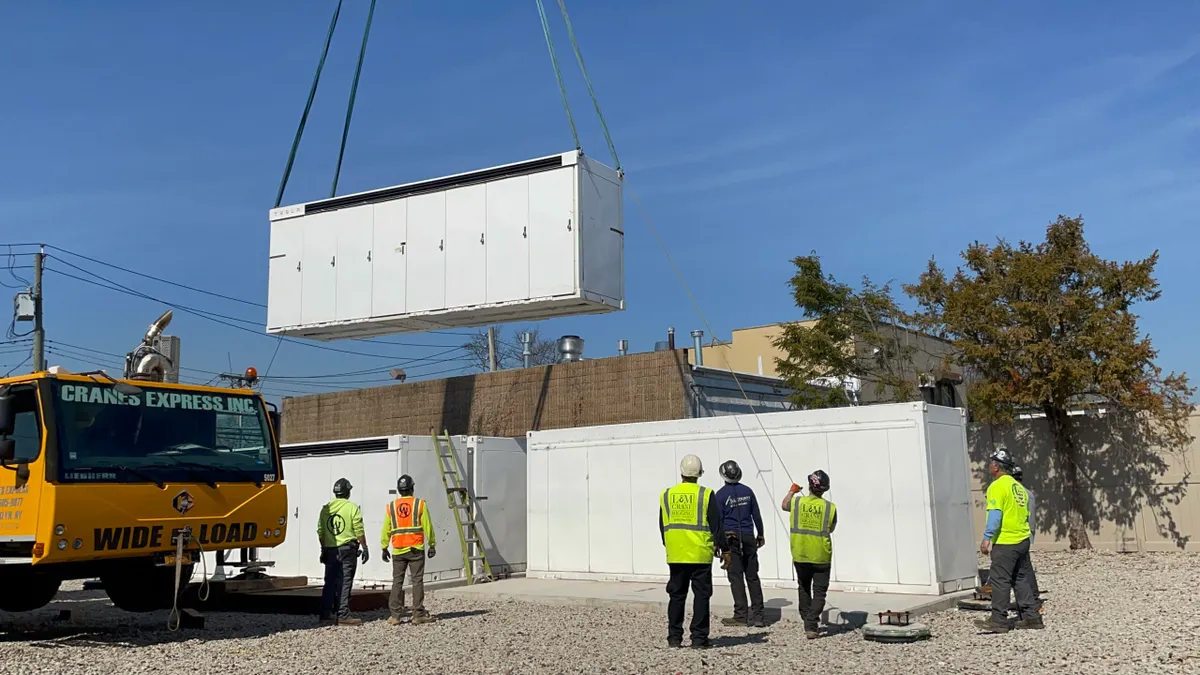It’s a common trope in the U.S. power sector to talk about the day that energy storage “went mainstream,” and was introduced to a broader audience beyond energy and technology circles.
Though batteries have been around for decades, that day was about a year ago — April 30, 2015, to be exact. That was the day Tesla Motors introduced its first two energy storage products, the residential Powerwall and the grid-scale Powerpack.
Coming from a household name like Tesla, whose fashionable electric cars are seen as pacesetters in the automotive industry, the batteries sparked new consumer interest in energy storage, and pre-orders for the product soared.
But Tesla is far from the first or only player in the residential storage market. While the sector is still in its nascent stage in the U.S., market conditions elsewhere have allowed other storage companies to develop working business models for residential consumers. Now, some are seeking opportunities on American shores.
One such company is Germany’s Sonnen. Since its founding in 2008, the Bavarian energy storage company has built eight generations of its all-in-one residential storage product, shipping its 10,000th system earlier this year. In December, it began offering its sonnenBatterie system — ranging from 4 kWh to 16 kWh — to customers in the U.S., with an aim to sell 3,500 of them in the country by the end of the year.
The first of those battery systems was shipped to Hawaii, a state whose high electricity prices and recent net metering reforms make it an appealing market for residential storage companies. That’s where Utility Dive found Boris von Bormann, Sonnen’s CEO, featured on a panel at the Maui Energy Conference last month. After his talk, he spoke to Utility Dive in an interview about Sonnen’s market strategy, its effect on utilities and competition with Tesla.
Sonnen eyes key markets: Hawaii, California and the Northeast
After Hawaii utility regulators decided to abandon retail rate net metering for rooftop solar systems last year, many installers reacted with alarm, saying it would slow adoption of rooftop solar systems.
But for residential storage, the story is much the opposite, von Bormann told Utility Dive. When the regulators ditched net metering, they replaced it with two options — a grid-supply option for customers who want to export generated electricity back to the grid and a self-supply option for those who want to generate energy for personal use only.
That second option — the self-supply tariff — provides an excellent opportunity for Sonnen’s storage product, von Bormann said. Under that option, Sonnen’s 4 kWh battery system paired with a rooftop solar system should provide a return on investment in about 6.5 years.
Hawaii is an obvious market for Sonnen’s product, which combines a lithium ion battery with an integrated inverter, switch and disconnect for an integrated solution that von Bormann claims can be installed right out of the box. The state has long been plagued by the nation’s highest electricity prices due to its isolation and reliance on fuel oil for generation, while nearly 30% of the island’s single family homes have rooftop solar.
Those factors open a huge opportunity for residential storage in the state, but the Sonnen CEO says his company is also looking to grow nationwide.
In the Northeast, people may find Sonnen's battery appealing for backup power during weather-related outages so “you're not standing at the gas station for two days to get your diesel for the diesel generator that you need to power the home,” he said. Such issues remain fresh in the minds of New England residents, many of whom lost power for extended periods during the Polar Vortex of early 2014.
California is another promising market for Sonnen, von Bormann said. While the Self Generation Incentive Program (SGIP) offers some money for certain home storage facilities, the Sonnen CEO was more excited about the transition to time-of-use (TOU) rates in the state. When California regulators preserved retail rate net metering until 2019 in a decision made earlier this year, they stipulated that all new net metering customers must be on a TOU rate, and the state’s utilities are preparing to transfer their entire customer pool to TOU rates by 2018.
Combining state storage incentives with net metering and TOU arbitrage can yield some “real interesting calculations,” von Bormann said.
“You can get easily to 60-70% of the cost [of a Sonnen system] through TOU arbitrage over the lifetime,” he said, “and then if you add tax credits and all, you can achieve a breakeven, even if you are on net metering and time of use in those markets."
Sonnen's appeal to the commercial sector
Beyond state-specific markets, von Bormann said Sonnen sees a big opportunity in selling storage to large energy consumers to help them cut peak usage and reduce demand charges.
The company is getting ready to unveil a new commercial storage solution either at the end of the second quarter or the beginning of the third quarter this year. Consumers, he said, will have the choice between a 24 kWh or 30 kWh battery building block that can be stacked for increased capacity.
In the solar sector, the commercial market is often seen as having significant untapped potential, and Sonnen shares that outlook for energy storage.
Whereas other storage companies may target chain stores like 7-Eleven or other well-known institutions, Sonnen has focused on building a network of local installers and solar partners that understand the needs of the mom-and-pop store down the street. Sonnen already has more than 30 local solar partners and is aiming for 100 by the end of the year.
“I think the real untapped potential is in these one-off areas where it's just one restaurant or one business, but you have to understand the profiles so that you can actively and efficiently target them,” von Bormann said. “That's the key in that market, I think; otherwise, customer acquisition is going to be quite difficult and expensive.”
For commercial customers, the value proposition in storage often lies in reducing demand charges — the fees utilities charge large energy users based on their peak monthly usage. When customers can combine that ability with TOU rate arbitrage and the ability to provide backup power, storage can be economical in a variety of markets. Increasingly, utilities are also looking to move residential customers onto demand charges, which would create even an greater opportunity for storage.
For residential and commercial customers alike, the key to taking advantage of these new rate arbitrage opportunities is having a battery that can cycle more than once a day.
“[If] you're using it for self-consumption plus time-of-use [arbitrage], you need two cycles,” von Bormann said, noting that his company offers a 10-year, 10,000-cycle guarantee.
Becoming the 'Airbnb of energy'
While Sonnen’s business in the U.S. today mostly focuses on marketing its systems to individual end users, it also wants to enable those customers to form a network and share the energy they generate with one another.
Late last year, the company attracted headlines with its launch of its sonnenCommunity network platform in its home market of Germany. The idea is to link solar and storage devices into a virtual grid that allows members to trade power among themselves and export the excess power into the wholesale market.
“We call it the Airbnb of energy,” von Bormann said. “We give that virtual platform and let customers participate with each other.”
That offering raised some eyebrows in the U.S. utility sector, as networks of customers sharing power could reduce — or even theoretically eliminate — the need for the incumbent utility company.
But far from putting the incumbent utilities out of business, von Bormann said that Sonnen can offer them the tools they need to cope with higher levels of distributed energy resources on their systems.
“I talk to a lot of utilities, and they say, ‘We understand there's 30,000 solar systems on [our system], but we don't understand their profile because we don't understand what the load is doing at the home and when,'” von Bormann said. “We have that platform.”
“We can install 1,000 of these systems and the instant these are installed, the utility fully understands what the consumption is at the home, when it is happening, when solar comes online, how it's used, how it performs and how it's stored,” von Bormann said.
Sonnen's software also includes a predictive element that forecasts energy production and consumption for the next three days across all the battery systems in a fleet.
With those tools, the utility “can control these assets at any time and also provide a value proposition to the end customers so they can have backup power,” von Bormann said. “So we see utilities as our partners.”
Partnerships with utilities
True to the CEO’s comments, Sonnen already has utility partners back in its native Germany, dating back to 2014.
“We developed a virtual power plant model with a small utility in Germany … where we actually aggregate storage devices and they use it for balanced energy trading,” von Bormann said.
While that project with the utility Lichtblick was focused on demonstrating the viability of a virtual power plant using the firm's technology, Sonnen also has partnerships with utilities to sell energy storage systems.
“RWE is using our product, so the storage product they sell to their customers is developed and manufactured by us, and we developed that specifically for them,” von Bormann said.
Sonnen is currently in talks with a number of U.S. utilities about similar deals to market the firm’s battery systems to customers, the CEO said, with a focus on municipal and cooperative utilities.
“It's a little bit easier for them to implement some of these programs. An IOU has a lot more difficult process to go through ... some of the munis have a little more flexibility,” he said. “They're a little bit smaller, they're a little bit closer to the community, let's put it that way. Or sometimes even the co-ops, they’re even more suited for that.”
But whether it’s a co-op, municipal utility or IOU, von Bormann said all types of utilities can benefit greatly from Sonnen’s communications and control software for distributed resources.
“We have an aggregated platform that we can deploy right now which has been proven on thousands of systems where we can say, 'Here's your command structure, drive them,'” he said.
While that opportunity should appeal to utilities around the nation struggling with how best to control the various DERs on their grids, von Bormann said the storage technology can help them save money by deferring or outright avoiding costly infrastructure upgrades in favor of distributed resource solutions.
“That's like the highest cost for the utilities, so there's a real value proposition there,” he said.
Is Sonnen a Tesla killer?
In its native Germany, Sonnen is the bona fide incumbent storage provider, accounting for about half of the residential market in that country, GTM Research analysts told Utility Dive earlier this year.
But in the U.S., its strategy brings it face-to-face with a better-known competitor — Tesla.
Elon Musk’s electric vehicle and battery storage company already has a utility-storage partnership similar to what Sonnen envisions with Vermont utility Green Mountain Power. In the Hawaii market, Tesla recently unveiled an all-in-one solar-plus-storage offering aimed at the self-supply tariff with SolarCity, the leading rooftop solar installer in the country (which counts Musk as one of its principals and founders). Across the country, the companies are jockeying to appeal to end users and utilities alike.
Von Bormann said Sonnen’s battery system has a few distinct advantages over its higher-profile rival.
First, Sonnen provides a “fully-integrated system,” rather than offering a battery and leaving it to end users to couple it with the correct inverters, switches and other power components, he said.
“We have one standard permitting package that we provide to our installers. They can just go in and it's the same every time,” von Bormann said. “So it takes the guesswork out of it, it takes the errors out, and it takes the mistakes out that a lot of people are still doing in installation and commissioning.”
Perhaps more significant is the experience of the company behind the products. While other storage companies are still figuring out their business models, Sonnen is a fully-fledged supplier.
“We have now over 10,000 systems installed on the market,” von Bormann said. “I think [Tesla is] somewhere below 50 right now.”
Tesla did not respond to requests for comment on this story.
“No one has ever installed as many batteries as we have on the energy storage side and we have historical data on them,” von Bormann said. “So all of the systems online — we monitor them, we data-mine, we understand what the customer needs, we understand how they drive them.”
The lessons learned from those systems and the platform they use are features Sonnen offers that other storage installers cannot. So too is the Sonnen 10,000-cycle guarantee, a crucial selling point for customers looking to use batteries for rate arbitrage, according to von Bormann.
“We give a 10-year guarantee and a 10,000 cycle guarantee, meaning if we talk about time of use plus self consumption, you cycle twice a day, and for that you need the cycle life,” he said. “These competitors won’t be able to achieve that.”
"We deliver a product to the market that really works,” von Bormann said. Sonnen is now in the eighth generation of its residential battery product, and the experience that has given the Sonnen team is invaluable.
“People think about just integrating an inverter, putting a battery together, putting a control on top of it and it works. It doesn't quite work that way,” von Bormann said. “It takes us a year or so to integrate a new battery into a new system, and 6 to 8 months for new power electronics to drive them, so there's significant work there and that's because we have the experience of building over 10,000 systems.”
At the end of the day, the Sonnen CEO said this experience led them to design an all-in-one battery with a high cycling guarantee. While other companies are focused on bringing down the cost of batteries, Sonnen's focus on reducing system costs has led to what von Bormann claims is the lowest cost per stored kWh on the market.
“You basically look at the fully installed cost, and you divide that by the number of cycles you can use it, times the capacity. And there we have an easy 10 cent [per kWh] advantage over everyone else in the market because of what our total system installed cost is and our cycle warranty.”
The competition isn’t going to get any easier for other storage providers in the space. Von Bormann told Utility Dive that after cutting the cost of its entire system 80% between 2010 and today, it’s envisioning a similar reduction in cost over a shorter period in the future.
“We think we have another 80% [cost cut] within the next four years,” he said.




















